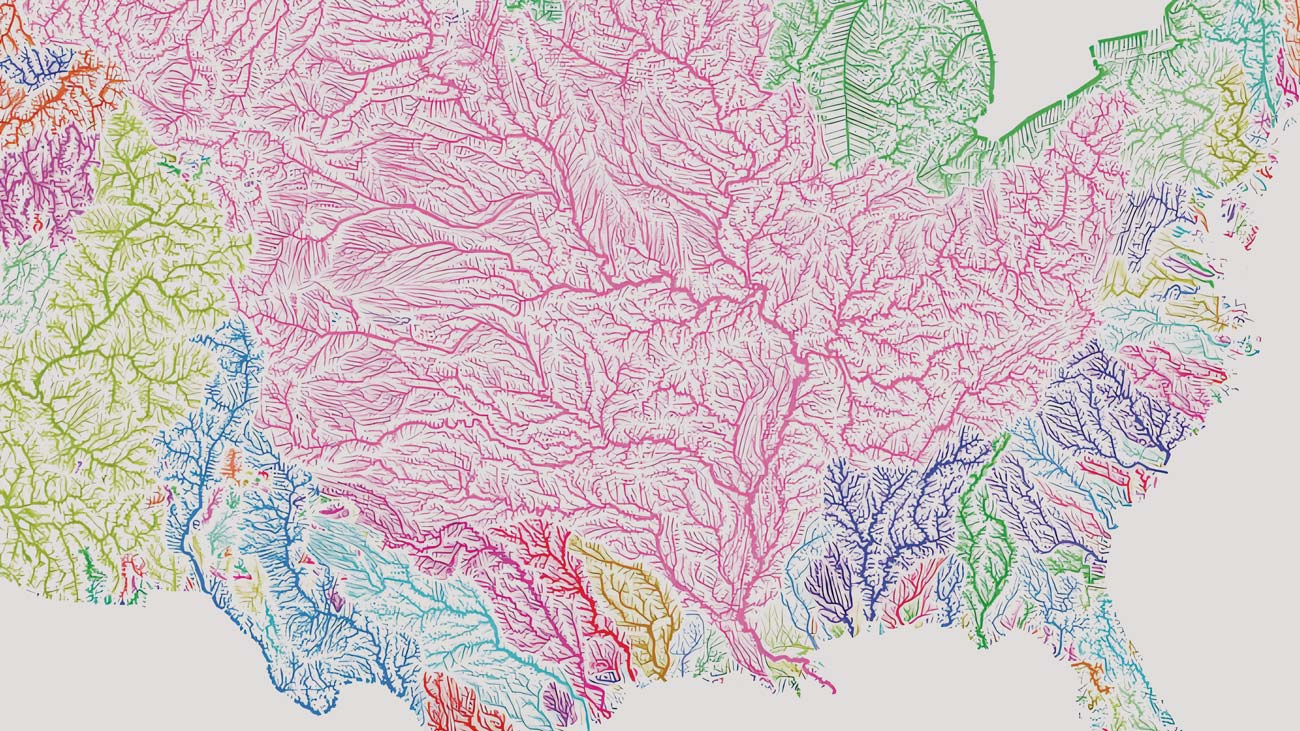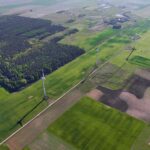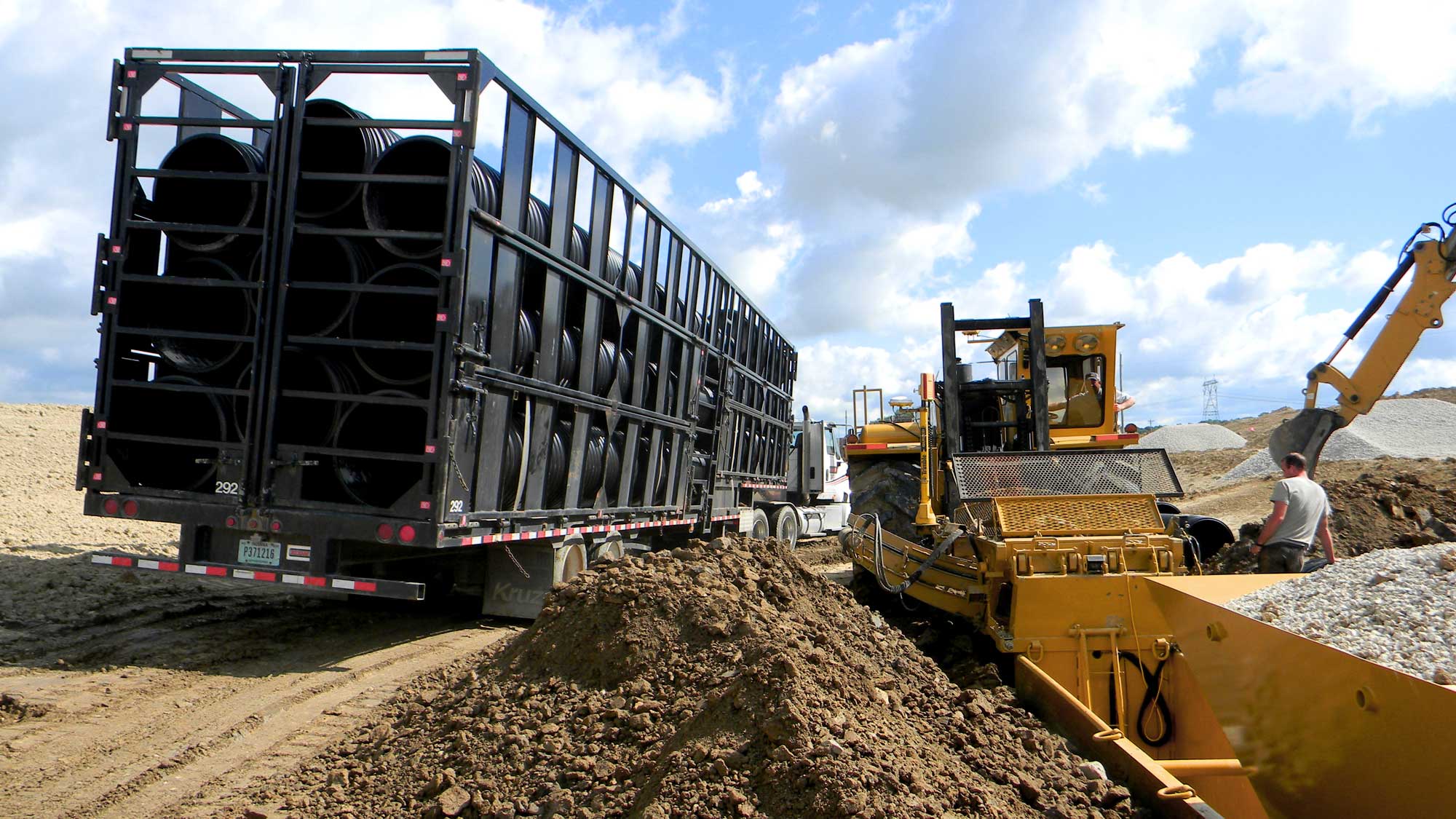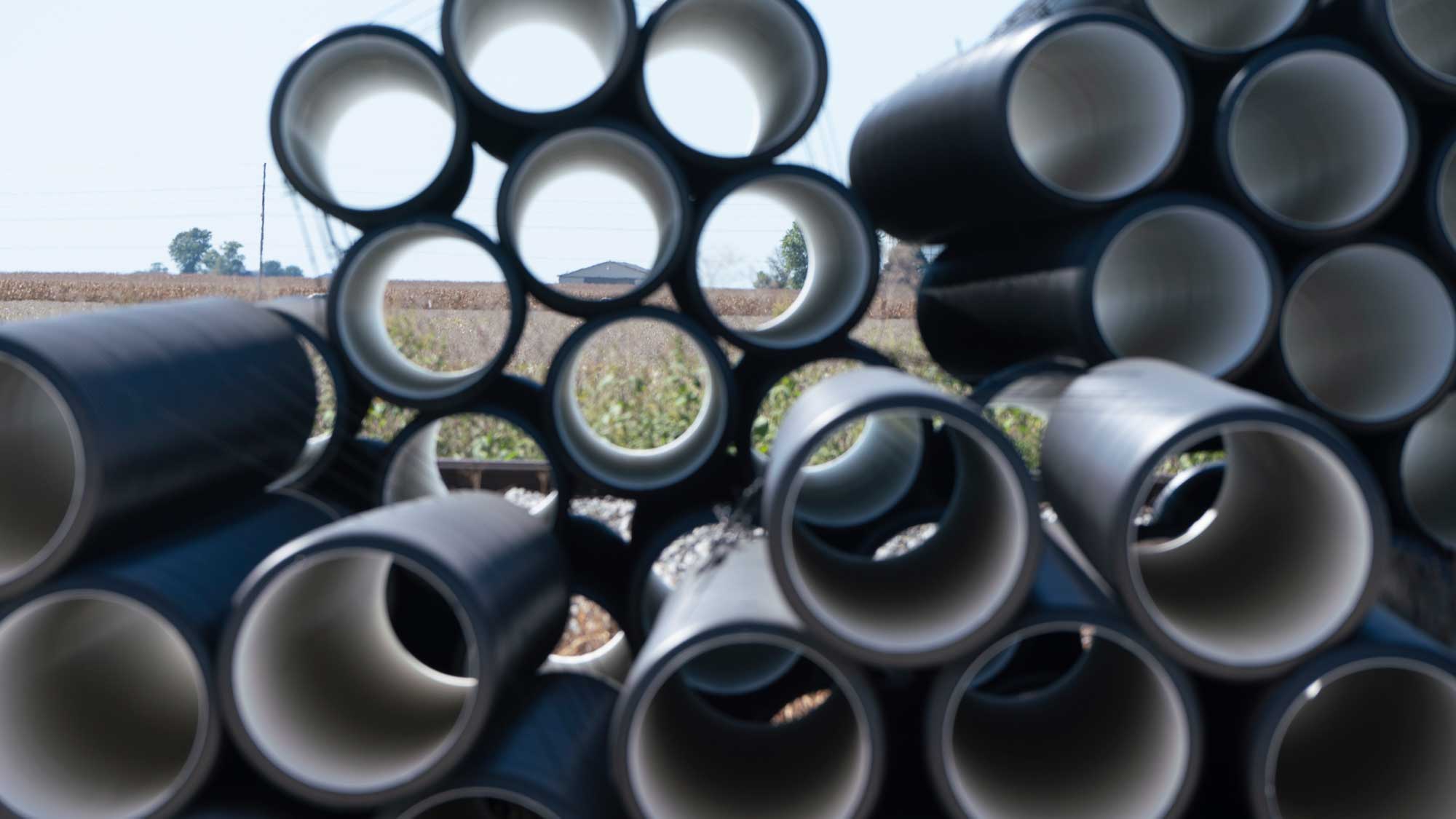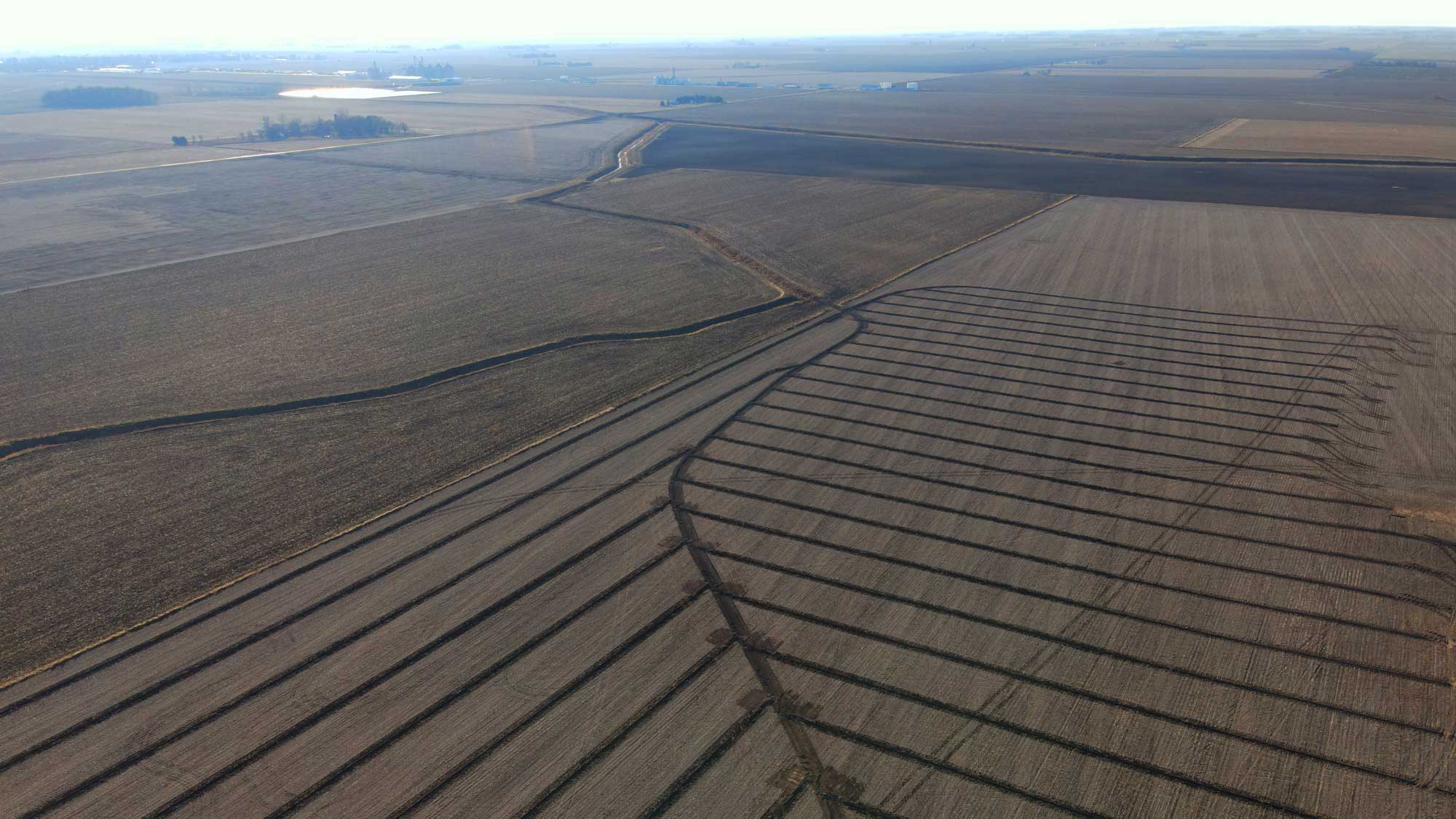As seen in the Tried & True Spring 2024 issue
What is a Watershed?
In simple terms, a watershed is an area of land where all the water, from rain to snowmelt, drains into a common outlet—like a river, bay or even the ocean. Think of it like a giant basin; everything that falls inside ends up in the same place. Seems simple right?
For example, a farm with Fratco pipe installed will drain water off the farm, and that water is probably drained into a nearby ditch. The ditch may flow into a creek or nearby pond or lake. That would be the end of a local watershed. But oftentimes varied amounts of water will travel through different basins, creating an inter-connected water cycle throughout the US, and the world!
In the midwest region, a lot of drained water will find its way to the Mississippi River and from there flow south to the Gulf of Mexico. Throughout its travel, some water is evaporating, and some water is seeping deeper into the soil to travel underground or to be evaporated later in warmer weather.
Why Watersheds Matter
As drainage experts, we’re not just laying pipe; we’re key players in guiding water through these natural pathways. Whether it’s a small creek in a rural area or a large urban canal, our work is part of a larger cycle that ensures water flows where it should, reducing flooding and erosion.
Proper drainage is more than just preventing a puddle in someone’s backyard. It’s about keeping the larger water system healthy.
Proper Drainage Practices Help:
Prevent Pollution: By controlling runoff, we reduce the risk of pollutants reaching our waterways.
Protect Wildlife: Many species depend on clean, stable water habitats. Our work helps maintain these ecosystems.
Support Communities: Good drainage means safer, more resilient communities, especially in flood-prone areas.
Every pipe laid, every trench dug, plays a part in this massive, interconnected water system. It’s a tough job, that’s why it has to be right. We’re not just working; we’re making a mark for the environmental health of our nation.
Next time you’re knee-deep in a drainage project, remember: you’re playing a vital role in managing America’s watersheds. Your skill and hard work keep the water flowing right, benefiting everyone and everything downstream.
The Heartbeat of America: Veins of Running Water
This diagram is a zoomed-out representation of the various watersheds across the lower 48. The large pink watershed, the Mississippi-Missouri Drainage Basin, is the largest watershed in the U.S.; including the basins for the Mississippi, Missouri, Arkansas and Ohio rivers.
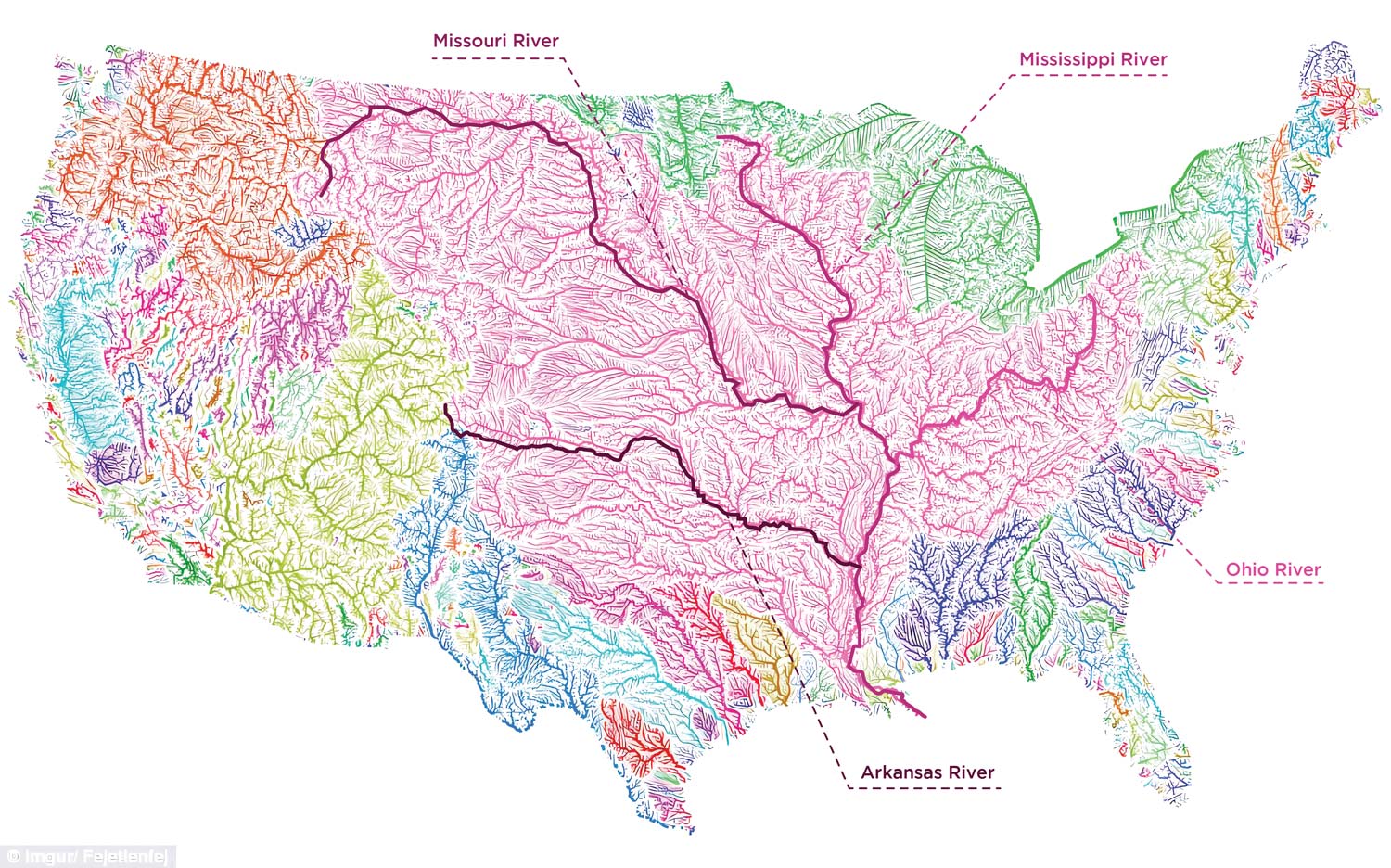
- The Missouri River is the longest river in the US, flowing about 2,450 miles long.
- The Mississippi-Missouri watershed serves as a drainage system for roughly 1.2 million square miles, encompassing 32 U.S. states and two provinces in Canada. This accounts for approximately 40% of the natural drainage area in the continental U.S.
- Spanning from the Allegheny Mountains in the east to the Rocky Mountains in the west, the Mississippi-Missouri Drainage Basin ranks as the fourth largest watershed globally.
Sources: Environmental Protection Agency, U.S. Geological Survey, National Park Service, Smart Water Magazine






